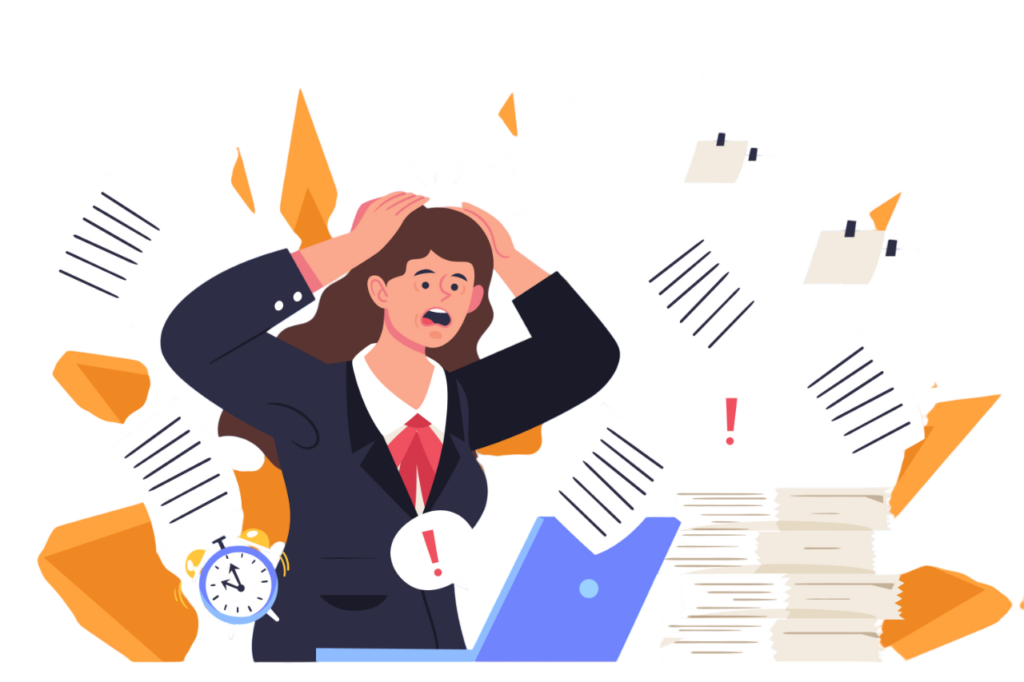Quick Refresh: External Referral Programs
When it comes to hiring great talent, your best source might not be sitting in your office; it could be outside of it. External referral programs open the door to recommendations from alumni, industry peers, customers, and even casual connections, rewarding anyone who helps bring in a successful hire. Unlike traditional employee referral programs, these initiatives expand your reach and can unearth candidates you’d never find through job boards or recruiters alone.
💡In this post, we’ll explore what external referral programs are, why more companies are leveraging them, and how to run one effectively. We’ll also look at real-world examples and share best practices to help you tap into broader networks and build a talent pipeline that goes way beyond your usual circle.

External referral programs invite people outside your organization, such as contractors, former employees (alumni), industry peers, customers, or other contacts, to refer job candidates for open roles. Unlike internal referral programs (which reward current employees for recommending friends or colleagues), external programs reach beyond your workforce and often offer finder’s fee payments to any qualified individual who submits a successful candidate.
💡In practice, these programs issue unique referral links or forms on the company’s careers site where non-employees can easily submit candidate information. If the referred person is hired (and usually stays on the job past an initial probation period), the referrer earns a cash bonus or gift, often in the range of a few hundred to several thousand dollars.
Benefits of External Referral Programs

External referrals can dramatically expand and accelerate hiring.
Studies from ReferralRock – a referral program software solution employed by companies like Mitel and TripAdvisor – show that referral-based recruitment achieves much higher conversion rates than general sourcing methods, roughly 30% of hires on average vs. 7% from other sources.
Candidates sourced through personal networks often turn out to be better matches for company culture and role requirements, and they tend to stay with the company longer. Because referrers typically know the candidate well, they self‑screen quality by only recommending people they trust.
In turn, time-to-hire is much shorter: companies cut recruitment cycle time from 60 days (without referrals) to about 35–40 days when leveraging referrals. These gains mean lower recruiting costs and faster onboarding. Even internal referral programs are prized for saving on agency fees and advertising, external referrals can similarly reduce dependency on costly recruiters.
External referral programs also tap into passive candidate pools. Many skilled professionals aren’t actively job-searching, but an incentive makes them (or someone they know) more open to considering new opportunities. By offering finder’s fees to anyone in the community, companies widen their reach into industry networks, alumni associations, user groups, and social communities. This broad approach can surface “hidden” talent that standard job boards miss.

💡For example, cybersecurity firm Nord Security publicly offers €1,000 for qualified engineering or product hires via an open form – thereby pulling in referrals from beyond its employee base.
Importantly, referral hires are often of higher quality. Berkshire Associates notes that referring someone is always a personal endorsement, so employees (or external referrers) are unlikely to recommend an unfit candidate. Many companies report that referred hires have higher satisfaction and retention, since they often join knowing someone at the firm or understanding its culture.
In short, a well-run external referral strategy can “double your recruiting power” by multiplying sourcing channels, improving candidate quality, and cutting hiring time and cost.
Challenges and Considerations

However, external referral programs also come with challenges.
Diversity and Inclusion Concerns
Because referrals rely on personal networks, bias and diversity issues can arise. If referrers suggest mainly similar candidates (same background or group), it may create an imbalance or “clique hiring.” HR experts caution that heavy reliance on referrals without offsetting strategies can inadvertently narrow diversity. To mitigate this, organizations should run referrals alongside broad recruiting efforts (job fairs, advertising, university outreach, etc.) and track demographic data to ensure EEO compliance.
Financial and Logistic Considerations
Other hurdles include financial cost and logistics. Large referral bonuses (often $1,000–$5,000 or more for specialized roles) mean firms must budget significant incentives. If a company is small or rarely hires, launching a full program may not be worth it.
Companies also need robust processes: verifying eligibility, avoiding duplicate or self-referrals, and preventing fraud (e.g., false referrals by splitting bonuses). The legal limits of paying finders’ fees should be reviewed; for instance, many programs explicitly exclude staffing/agency recruiters (to avoid double-paying or breaching vendor contracts).
Admin Concerns
Administrative overhead is another challenge. An external program must be promoted to external audiences (on the company careers page, social media, etc.), and referrals must be tracked and vetted. Without automation or referral software, this can burden HR. Clear communication is crucial so referrers know who qualifies and how to apply. For example, ERE.net highlights that while enticing (“Want to make $500 for mentioning someone?”), companies must be careful of legal constraints when asking outside contacts for referrals. In practice, this means ensuring referral requests do not violate anti-solicitation agreements or privacy rules.
Here are 6 best practices to help you turn those external-referral pain points into wins:

1. Treat Your Referral Program Like a Marketing Campaign
An external referral program is powerful, but it shouldn’t be your only channel. Integrate it with your broader sourcing strategy: job boards, campus partnerships, and community events.
The key is to track your “source of hire” data week by week. This is the fastest way to spot diversity gaps and rebalance your efforts before they become a problem.
You also have to actively market the program. Don’t assume people will find it.
Advertise it on your careers page, social media, and at recruiting events.
Send it to alumni networks and industry groups.
Tell candidates in interviews that if the role isn’t for them, they can still “earn by referring a friend.”
2. Make Referring Insanely Easy
If your referral form is complicated, no one will use it. Reduce friction at all costs. A submission should only require the absolute basics:
The referrer’s name and contact info
The candidate’s name and contact info
The target job ID
Avoid lengthy questionnaires. The goal is a one-click process. Can they submit via a simple email? Can they share a unique link from social media? The easier you make it, the more referrals you’ll get.
3. Embed Bias-Awareness from the Start
Referrals naturally favor established networks, which can unintentionally harm your diversity goals. Combat this proactively.
For Referrers: Offer a quick “referral bias” training or a simple checklist of diverse traits to consider.
For Your Team: Implement blind screening for all referred resumes. By removing names, addresses, and other identifying info, you ensure your team is judging candidates purely on their skills.
4. Be Strategic and Transparent with Rewards
Not all hires are created equal. Design a tiered incentive plan to maximize your ROI.
Offer your highest rewards for your most hard-to-fill roles (like senior engineers or niche security roles).
Offer smaller, but still motivating, bonuses (e.g., $500) for more common roles to keep costs in check.
As the experts at Referral Rock note, “the reward must be substantial enough to motivate.” For external referrers, cash is king. Be transparent and publicize the reward amounts upfront so people know exactly what to expect.
5. Automate Your Workflow (But Audit It Manually)
Don’t let good referrals die in an inbox. Use a simple tracking tool or ATS add-on to manage the flow. A good system should automatically:
Block duplicates (no self-referrals or bot spam).
Send an immediate “Thanks, we got your referral!” confirmation email.
Flag any candidate who hasn’t been contacted for follow-up.
💡Then, once a month, manually audit the data. Look for oddities like ten entries from the same domain or referrals stuck in “submitted” status. This keeps your pipeline clean, your referrers informed, and your team focused.
💡Tools to consider:
6. Lock Down Compliance Before You Launch
Before you get your first referral, have your legal policy ready. This should be a simple, one-page document that clearly explains:
Who is eligible: (e.g., no staffing vendors or immediate family).
What counts as a hire: (e.g., no rehires within 6 months).
How taxes work: (e.g., “You’ll receive a 1099-MISC for earnings over $600″).
Data & Consent: How you’ll handle personal data.
💡Put this policy on your careers page and require all referrers to check a “Terms & Conditions” box. This single step will save you massive legal headaches later.
Legal and Compliance Considerations

Involving non-employees in your recruiting process means taking on new legal and compliance responsibilities. Managing them correctly is non-negotiable.
First, let’s be clear about taxes. In the U.S., an external referral bonus is taxable income. If you pay any single non-employee $600 or more in one year, you are legally required to send them an IRS Form 1099-MISC. The best practice, seen at companies like Raytheon and Forward Financing, is to require a W-9 from the referrer before you pay them. This simple workflow ensures you meet your IRS reporting obligations and makes it clear that the referrer is responsible for their own income taxes.
Beyond taxes, your program must support, not sabotage, your existing anti-discrimination and anti-nepotism policies. Be explicit about your rules, for example, stating that immediate family members are not eligible for bonuses. It’s also critical to ensure equal opportunity. A referral should get a candidate’s resume reviewed, but it should not buy them a “pass.” Make it clear to hiring managers that all candidates must be evaluated against the same job criteria.
This same level of care applies to data privacy. When someone submits a candidate’s name or resume, you are now handling that person’s private data (PII) and must comply with laws like GDPR or CCPA. Your single most important rule should be requiring the referrer to confirm that the candidate has given their consent to be referred.
Finally, don’t assume U.S. rules apply everywhere. If you operate internationally, check local labor laws, as some countries restrict third-party referral fees. Highly regulated industries, like defense, often have their own specific rules. For instance, programs like the Raytheon External Referral Incentive Program (ERIP) explicitly require referrers to be legal U.S. residents.
Put all of this in writing. A simple, public-facing policy that clearly states, “You are solely responsible for paying any applicable taxes on your referral reward,” keeps the rules transparent and maintains your program’s integrity.
Tapping Broader Networks

External referral programs naturally encourage tapping into non-employee networks. Beyond asking the general public, companies often leverage existing communities:
- Alumni networks: Former employees know your company and often have peers in the same field. Corporations like Bechtel maintain active alumni communities, and report that a quarter of new hires can be “boomerangs” – rehires from the alumni pool. Even without a formal rehire, alumni can refer classmates or colleagues; some programs target alumni specifically. Research suggests a robust alumni program can account for about 20% of external hires. Maintaining an alumni portal or newsletter keeps former staff in touch and aware of referral incentives.
- Partners and customers: Consider inviting industry partners, vendors, or even satisfied customers to participate. People who use or sell your products may know talent in your space. Some companies run “friends and family” or affiliate-style referral programs, akin to marketing referral schemes, but directed at job candidates. For example, in consumer tech, product ambassadors or community influencers might refer engineers.
- Public communities and social media: Publish referral opportunities on LinkedIn, professional groups, or campus/alumni associations. Encourage employees to share job links externally by providing them with public referral links.
In effect, this blends employee and external referrals: an employee might tweet a referral link to their followers, getting friends outside the company to apply.
In all cases, the goal is to widen the pipeline beyond the office. By recognizing that valuable candidates can come from anywhere, not just from one’s coworkers, companies can discover talent from diverse sources. As an industry thought leader noted, well-designed referral programs “identify top prospects that are not in a job-search mode” and make them interested through personal outreach
Real-World Examples

Booz Allen Hamilton, a leading American consulting firm specializing in technology and management services, has cultivated one of the most effective external referral programs in the industry. Approximately 26.11% of its hires stem from referrals, highlighting the program’s significant role in the company’s recruitment strategy. To incentivize participation, Booz Allen offers a generous $3,000 bonus for each successful referral. This approach not only accelerates the hiring process but also ensures a higher quality of candidates, as referrals often come with a level of pre-vetted assurance.
Conclusion
External referral programs represent a powerful extension of traditional employee referrals.
By inviting anyone with relevant connections to refer candidates (and rewarding them accordingly), companies can tap vast new talent networks. The key to success lies in clear program design: define eligibility, set compelling incentives, simplify referrals, and ensure legal compliance (especially around taxes and non-solicitation rules).

Team Rakuna
The Rakuna Team comprises a diverse group of professionals hailing from various corners of the world.
With a passion to enable organizations to hire their next waves of talents, we are dedicated to help organizations stay updated on important recruiting technology and industry best practices.


